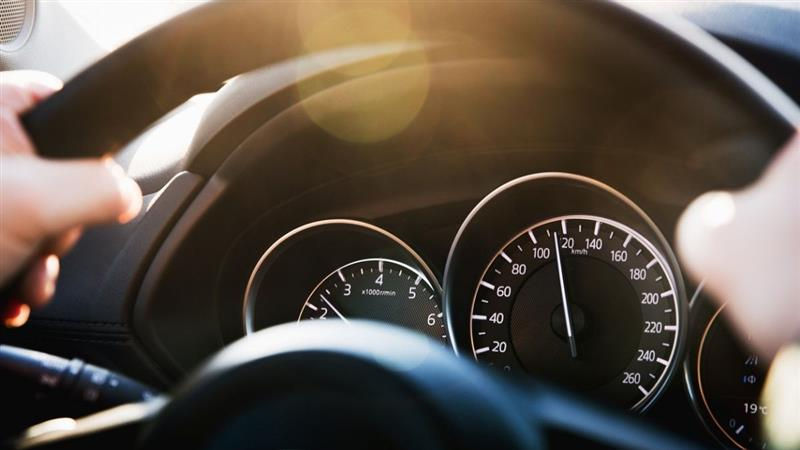What is needed to "chip" a car?
- _ADM_ /MR.NITRO

- Aug 19, 2022
- 4 min read

Vehicles increasingly have electronically controlled components, from the entertainment center to the engine! Chiping a car, or reprogramming, is a change in the Electronic Injection Central (ECU) that allows it to gain more power.
Thus, with some modifications to the vehicle's software, it is possible to gain several horsepower, save fuel and increase the overall performance of the car.
So, read on and learn more about automotive chipping!
What does a "chipped" car mean?
Very common in competition vehicles, chipping a car means gaining more power and torque through modifications to the Electronic Injection Center (ECU).
This central is linked to several aspects of modern vehicles. As the brain of the car, the ECU controls various parameters of the engines to ensure that they are working within the criteria set by the automakers.
In this way, having the necessary equipment and knowledge, it is possible to change the software settings and “release” more power and torque without changing the mechanical part of the car.
How does it work to "chip" a car?

To chip a car, it is necessary to access the Electronic Injection Center (ECU) and, with the support of specific software, make changes to the parameters.
Thus, the electronic control unit is removed from the engine. Then, it connects the part to the computer that will be accessed by specific software developed especially for reprogramming.
It is also critical that modifications are carried out by an expert so that the parameters are set correctly and damage to the engine is avoided.
After the modifications, it is crucial to carry out a battery of tests on an equipment called a dynamometer. In it, the vehicle will be able to accelerate without leaving the place. With the help of several sensors, different performance parameters are measured, guaranteeing the chipping quality.
What is Stage 1 and Stage 2?
It is possible to chip a car in two ways, depending on the objective and desired power gains. Also called Stage 1 and Stage 2, remap can happen:
Stage 1: reprogramming with changes only to the software, that is, without causing any change to the vehicle;
Stage 2: software changes and minor mechanical interventions to extract maximum performance.
It is worth noting that each company that performs this service has different parameters than what they consider Stage 1 and 2. Thus, it may happen that the performance gains in Stage 1 in one company are not achieved in another.
Are there risks of chipping a car?

Chiping a car can bring some disadvantages. However, most of the risks happen when the reprogramming is not done by specialized professionals.
This programming is not simple. There are huge tables and complex codes. If not, the person is not prepared, it can happen that the software crashes and even the total replacement of the module is necessary.
In addition, when looking for performance, but without a balance and the correct calibration, it can lead to increased fuel consumption and pollutant emissions — instead of helping to save and gain performance.
Therefore, chipping a car is only with specialized companies!
What are the benefits of remap?

Performing the remap has several advantages. For competition vehicles the advantage is obvious: extracting the maximum possible performance from the engine.
However, chipping a passenger car also has its advantages:
power increase
To perform overtaking more safely, accessing the engine's power reserves is crucial. Thus, the vehicle can accelerate more forcefully and gain speed faster.
torque gains
Torque defines how fast the vehicle can get out of the start position, climb hills and start with fewer gear changes.
Thus, torque is a very important characteristic for driving in urban centers, where the car is constantly needing to start quickly.
better drivability
Chiping a car will also impact the steering, making it lighter and more comfortable. In serious and capable workshops, chipping is not a mere change of codes in the computer, but a complete analysis of the vehicle to extract the perfect performance.
Better engine efficiency
In Brazil, automotive chipping has gained strength especially to carry out fuel conversion. The objective was to convert a car from gasoline to alcohol, given that the value of ethanol at the time cost about R$ 1.00/liter.
However, the arrival of Flex engines meant that the objective of chipping a car was aimed at gaining power, torque and improving fuel economy.
With a chipped vehicle, the response will be better, that is, it needs less fuel for the vehicle to develop, whether on a slope, on a sprint or overtaking.
Is it worth chipping a car?
Evaluating the risks and advantages, it makes a lot of sense to chip a car, as long as it is done by professionals.
Thus, it is possible to have a better response of the car in the starts and acceleration, which improves the drivability and safety, as in the overtaking.
It's also a great way to achieve better fuel economy, and at current prices, that can make a big difference in your pocketbook.
In fact, these performance gains can be achieved in other vehicles, so that they are more productive in their roles. See more about this below:
Is it possible to reprogram other vehicles?
Trucks, agricultural and nautical machines can also be chipped. With remap, these categories can be more productive, for example, an agricultural machine can increase crop productivity and reduce production costs, by saving on diesel!
For trucks, the power and torque gains generate a very noticeable advantage for drivers. For example, there is better engine response and development, enabling:
Shorter trips;
Less gear shifting and therefore less maintenance;
Fuel economy;
Less driver wear.
Reprogramming is not just a matter for automotive performance enthusiasts, but also a matter for business owners and fleet managers!
However, whether to chip a passenger car, agricultural machinery, trucks, among others, it is essential to have specialized help.
Source: https://strikebrasil.com






Hozzászólások